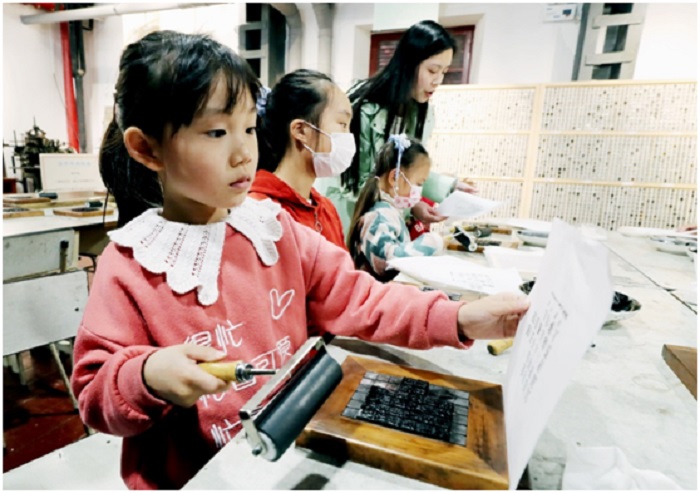



Intangible cultural heritages in Beijing’s Xicheng district have been well protected in recent years thanks to a program that recruits and trains volunteers into inheritors of these invaluable cultural assets that kicked off in 2014.
Xicheng district is home to a number of intangible cultural heritages. As of 2019, it had 36 intangible cultural heritage items under national protection, 67 under municipal protection, and 208 under district protection. These items covered all 10 categories of intangible cultural heritage protection announced by China’s Ministry of Culture and Tourism, and accounted for nearly 1/3 of those of Beijing.
However, the aging and lack of inheritors in the district were major obstacles that hindered the inheritance of these heritages.
The program recruited volunteers for 5 intangible cultural heritages in 2014. “We received hundreds of calls a day,” said Yang Fei, director of the intangible cultural heritage protection center of Xicheng district. According to him, the program planned to recruit 5 volunteers for each heritage, but it was beyond their expectation that over 1,000 people signed up in just a few days. Finally, 45 of them were selected.
A total of 36 intangible cultural heritage items launched open recruitment in the past 7 years and trained 308 volunteer inheritors. The training sessions were filmed and posted on social media, attracting many fans of the intangible cultural heritages.
“The program has built a bridge between the inheritors and volunteers, and will better carry forward the intangible cultural heritages,” Yang said.
The volunteers are not all seniors, and the group is joined by many youngsters like Sun Huiyao, a 15-year-old middle school student who signed up for dough modeling inheritance. Though he has heavy academic tasks, he has never missed a single training session offered every week. Two years ago, he started learning oral stunts under the program and since then developed a strong interest in intangible cultural heritages. This year, both he and his mother were selected as volunteer inheritors. The boy learns dough modeling while his mother, a doctor, learns Chinese herbal perfume.
Today, as more and more young people are getting closer to intangible cultural heritages because of the program, they are also making changes to the heritages.
Cheng Gang, a student studying opera theories at Tsinghua University, has raised a proposal to compile a history for traditional Chinese opera headdresses and set wearing and manufacturing standards for different types of operas. His idea surprised Li Xin, an inheritor of headdresses manufacturing. “I make headdresses and he’s good at theoretical studies, so we make a great pair that helps the development of this skill,” Li told People’s Daily.
Keci is an intangible cultural heritage by which craftsmen uses chisels made from diamond to carve patterns on the glaze of chinaware. However, such artworks fade when they are stained by water. Zhou Xiaoming, a young art designer graduating from the College of Fine Arts of the Capital Normal University, developed permanent pigments that turn keci artworks into more practical garnitures. Chen Yongchang, from whom Zhou learns keci skills, noted that it’s great to see that keci artworks can become practical wares.
“The volunteers are injecting new blood into the inheritance of intangible cultural heritages,” Yang remarked, adding that they will keep exploring new ways to carry forward the heritages and make them more sustainable.


The Humanitarian Service Diamond Awards has.
A Chinese Company, Inner Galaxy Steel.


The Programme Coordinator, Regulatory, Compliance and.


A Non-Governmental Organization (NGO), Committee for.
The Trustfund Pensions Limited has chided.


The House of Representatives Committee on.
The China General Chamber of Commerce.


Senator Chuka Utazi who represented Enugu.


An Abuja based Legal Practitioner, Ugochukwu.


The African business community in Yiwu,.
Leave a Comment